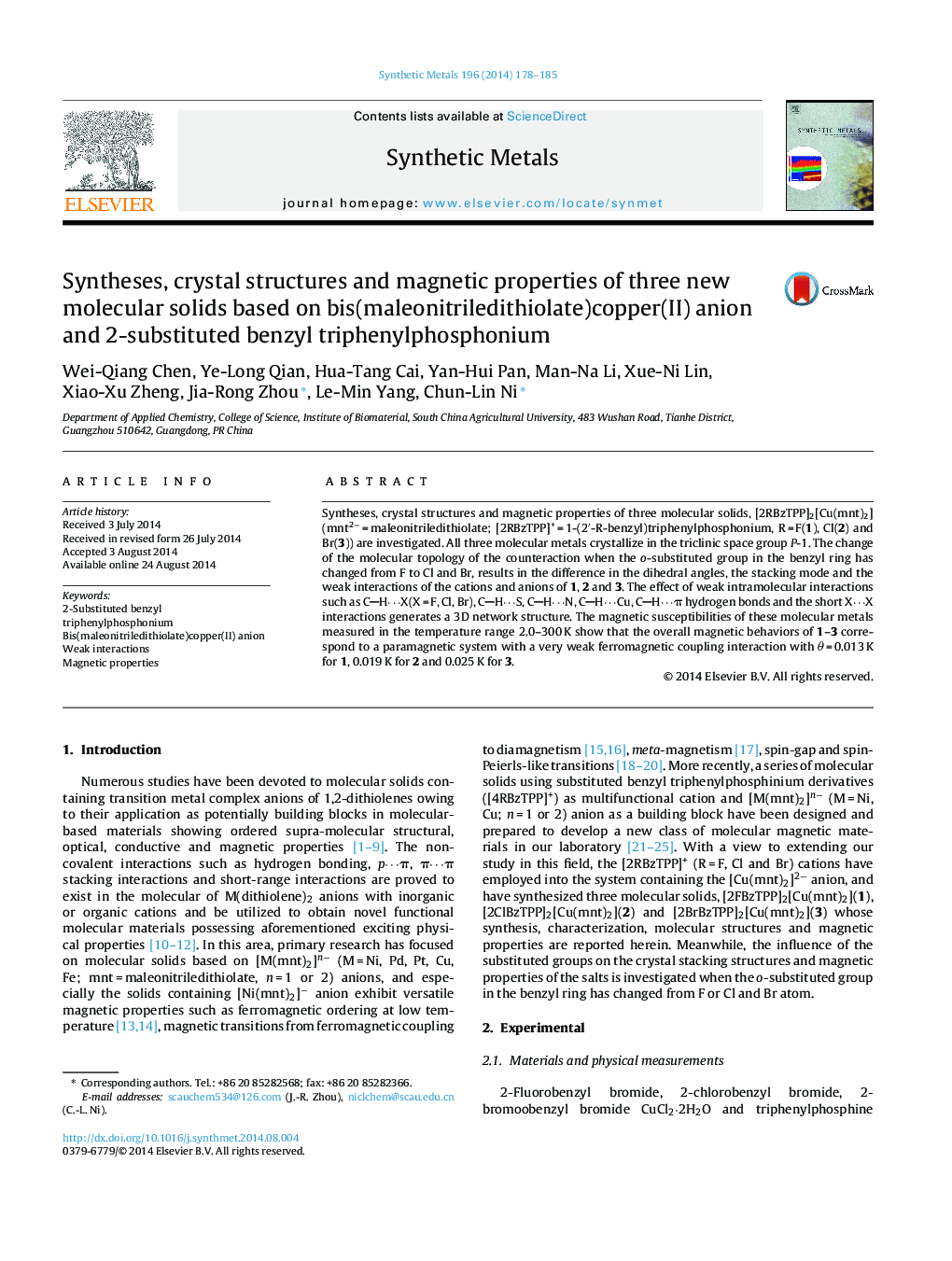| Article ID | Journal | Published Year | Pages | File Type |
|---|---|---|---|---|
| 1440852 | Synthetic Metals | 2014 | 8 Pages |
•Three molecular solids containing [Cu(mnt)2]2− anion were synthesized and characterized.•There are weak CH⋯X, CH⋯S, CH⋯N, CH⋯Cu, CH⋯π and X⋯X interactions.•Three molecular solids form a 3D network structure, and show weak ferromagnetic coupling at 2.0–300 K.
Syntheses, crystal structures and magnetic properties of three molecular solids, [2RBzTPP]2[Cu(mnt)2] (mnt2− = maleonitriledithiolate; [2RBzTPP]+ = 1-(2′-R-benzyl)triphenylphosphonium, R = F(1), Cl(2) and Br(3)) are investigated. All three molecular metals crystallize in the triclinic space group P-1. The change of the molecular topology of the counteraction when the o-substituted group in the benzyl ring has changed from F to Cl and Br, results in the difference in the dihedral angles, the stacking mode and the weak interactions of the cations and anions of 1, 2 and 3. The effect of weak intramolecular interactions such as CH⋯X(X = F, Cl, Br), CH⋯S, CH⋯N, CH⋯Cu, CH⋯π hydrogen bonds and the short X⋯X interactions generates a 3D network structure. The magnetic susceptibilities of these molecular metals measured in the temperature range 2.0–300 K show that the overall magnetic behaviors of 1–3 correspond to a paramagnetic system with a very weak ferromagnetic coupling interaction with θ = 0.013 K for 1, 0.019 K for 2 and 0.025 K for 3.
Graphical abstractFigure optionsDownload full-size imageDownload as PowerPoint slide
